The Secret History of Hyderabad State of the Nizam (South India; 1724 – 1948)
Last Updated on July 15, 2021 by Hamad Subani

Once upon a time, kingdom as big as modern Germany straddled the Deccan plateau South India. This investigative essay attempts to chronicle it’s secret, untold history, from its auspicious beginnings to its abrupt and mysterious end in 1948. We examine the kingdom’s founder, the Nizam, an extraordinary man who emerged as the guardian of the Mughals, battling Illuminati conspiracies all his life, and saving the Mughal rulers of the Indian Subcontinent from imminent destruction three times. We look at the existential struggles succeeding Nizams faced, their fateful alliance with the British which resulted in the financial entrapment of Hyderabad State. We take a close look at the man who liberated Hyderabad State from this entrapment, Prime Minister Salar Jung, and we examine the role he played in preventing Hyderabad State from perishing in the events of 1857.
We arrive at the startling conclusion that after the Illuminati assassinated Salar Jung in 1883, Hyderabad State faced a secret hostile takeover by British Intelligence. And that this region was transformed into a scene of a giant conspiracy, mainly involving British Intelligence. They had planned to stay behind long after granting India its independence, secretly embedding themselves in the Hyderabad State as well as in other princely states. And covertly, they had already gone to war with Gandhi’s India. But the last Nizam of Hyderabad surprised them with a secret counter-conspiracy. He invited troops of the newly created nation of India, resulting in the permanent eviction of British Intelligence from the Deccan. Reading between the lines of what unfolded in 1948, we get the picture of the last Nizam, a frail old man, suddenly turning the tables on the Illuminati’s future plans for the Indian Subcontinent. While the rest of the world would know him as the richest man ever, we learn (for the first time ever) that he was also a secret freedom fighter of the Subcontinent. In the end, his cathartic actions also precipitated the end of the Hyderabad State. But for reasons that can only be best understood by him, he knowingly accepted this destiny.

The Origins of Hyderabad State
When we trace the origins of the Hyderabad State, two people stand out as its founders. The first is Asif Jah I. The second is an anonymous Saint, whose identity I can only speculate and theorize. In this chapter, we will examine the role of Asif Jah I with respect to the Mughal Empire.
Asif Jah I
The official founder of Hyderabad State was Mir Qamar-ud-din Khan Siddiqi, who also held the official Mughal titles Chin Qilich Khan, Nizam-ul-Mulk, Ghazi ud-din Khan Bahadur, Firuz Jang and Asaf Jah. For the purpose of simplicity, we will refer to him as Asif Jah I (1671-1748). He is considered to be one of the most magnanimous personalities the Mughal Empire ever produced. Most people seem to know him by his title “The Nizam.” This was a Mughal title, which in turn was derived from a similar title used by the Seljuk Turks for a specific vizier who is a legend in Islamic history. The grandfather of Asif Jah I was Kilich Khan, a native of Uzbekistan, who first visited India while en route to pilgrimage in Mecca. Legend has it that he came from a family of scholars who traced their line back to Abu Bakr Siddiq, the first Caliph of Islam. Indeed, Asif Jah I did have the surname of Siddiqi, and there is evidence that many Arab-Islamic scholars were rounded up by Amir Timur and forcibly resettled in Samarkand. Kilich Khan soon distinguished himself as a brave and fearless warrior during Aurangzeb’s succession. He would die in Deccan, after being hit by a piece of shrapnel during Aurangzeb’s assault on the massive fortress-complex of Golkonda. His son Feroze Jung I (1649-1710) was the commander of Mughal forces during this assault, and he subsequently captured Golconda for Aurangzeb. The son of Feroze Jung I, Asif Jah I entered the military service of Aurangzeb at a very tender age, and soon distinguished himself in his personal bravery during the Deccan campaigns, as well as in his personal loyalty to Aurangzeb.

Aurangzeb’s Deccan Campaigns (1657-1707)
Establishment historians and old-time Orientalists view Mughal Emperor Aurangzeb’s conquest of the entire Deccan plateau of South India as a pyrrhic victory, a vain exercise in aggrandizement, that led to the subsequent downfall of the Mughal Empire. We are told that this massive conquest drained the Mughal Treasury. In reality, the Mughal economy was so strong that by the death of Aurangzeb, they could afford several more Deccan Campaigns and perhaps many more Taj Mahals. The situation of the Mughal Treasury at the time of Aurangzeb’s death can best be surmised as follows,
The Imperial Reserves at Agra proved to be little depleted by the Deccan wars. Bahadur Shah’s officers found coined and uncoined gold and silver totalling 240 million Rupees, considerably greater than Akbar’s reserves at his death.[1]J. F. Richards, “Mughal State Finance and the Premodern World Economy,” Comparative Studies in Society and History 23 (1981): 293.
There is the issue of Aurangzeb’s “intolerance,” which, according to Establishment Historians, undid the Indo-Islamic civilization of the subcontinent in a whirlwind of hate. And that common people became so enthused with hatred against the Mughals that they preferred the predatory Marathas, and later the rapacious British over the Mughals. This is too big an issue to cover here. Many more books can be written on it. But the basic premise of this argument boils down to the Orientalist assumption that the Mughals must be seen as foreigners. And since the British being “enlightened, civilized, modern and scientific” foreigners were still extremely rapacious and were forced to leave the country in ignominious circumstances, the Mughals being “despotic, decadent, Asiatic, Muslim, authoritarian, monarchical, and backward” foreigners had to be by default, far more predatory, and incapable of being loved by the common people. Aurangzeb can indeed be faulted for a haphazard implementation of jiziya tax on able-bodied, male non-Muslims. This was not in the spirit of Islamic law. Theoretically, jiziya was to be collected from all non-combatants, including Muslims who chose not to participate in the defense of the Mughal State. The amount collected is often exaggerated. Though it was much smaller than the taxes that are diverted to ambiguous “defense budgets”by modern governments. It is usually estimated at 15% of the total revenue obtained under Aurangzeb.[2]Satish Chandra, “Jizyah and the State in India during the 17th Century,” Journal of the Economic and Social History of the Orient 12.3 (1969): 136. While Muslims were exempt from jiziyah, it was now mandatory for them to pay 2.5% zakat on merchandise higher than a minimum amount.[3]Khafi Khan, History of Alamgir: Being an English translation of the relevant portions of Muntakhab al-Lubab with notes and introduction Trans. S. Moinul Haq (Karachi. Pakistan Historical Society. 1975) 197. On the other hand, Aurangzeb did abolish several taxes which the ulema deemed un-Islamic,[4]Satish Chandra, “Jizyah and the State in India during the 17th Century,” Journal of the Economic and Social History of the Orient 12.3 (1969): 135. such as road toll, road toll on the transit of grains, sales tax on shops that rented space in bazaars, taxes on animals, taxes on grazing, taxes on banjaras (nomadic cattle grazers), taxes on non-Muslim religious gatherings, taxes on intoxicants and taxes on “places of sin” to name a few.[5]Khafi Khan, History of Alamgir: Being an English translation of the relevant portions of Muntakhab al-Lubab with notes and introduction Trans. S. Moinul Haq (Karachi. Pakistan Historical Society. 1975) 93-94. Altogether, 80 taxes bringing in crores of Rupees to the Treasury were abolished.[6]Khafi Khan, History of Alamgir: Being an English translation of the relevant portions of Muntakhab al-Lubab with notes and introduction Trans. S. Moinul Haq (Karachi. Pakistan Historical Society. 1975) 93-94. Certain loyal non-Muslim fighting groups such as those of the Rajputs were completely exempt from jiziyah. And of course, the egregious modern day equivalent of income tax never existed under the Mughals.

Then there is the touchy issue of temple demolitions, which did happen here and there, but never as part of an organized policy. There are even records of Aurangzeb giving monetary grants to some of the more well-known temples. Aurangzeb never built a single grand mosque, tomb or monument unlike previous rulers. He viewed it as a waste of taxpayer money. Instead, he built small, functional, room-like structures for prayer wherever he had to set camp in the Deccan. These mini-mosques can still be found peppered across the Deccan landscape, though, many are dilapidated and abandoned. Unlike other Mughal Emperors, Aurangzeb specifically requested that he was to be buried in an unmarked grave in the Deccan town of Khuldabad, next to the tomb of a Sufi Saint.

While it is true that the Mughals went into steep decline after Aurangzeb, this had little to do with Aurangzeb or with the Deccan Campaign. After Aurangzeb, the Mughals were hit by an internal conspiracy involving the Sayyid Brothers. In my book The Secret History of Iran, I have traced their origins to the Illuminati rulers of European Byzantium. In other words, the Mughals were already locked in a battle with the Illuminati long before Europeans made the sea route to India. Establishment Historians have thus used the Deccan Campaign as a smokescreen to hide the real actors involved in the accelerated collapse of the Mughal Empire.

The Mughals were exclusively a North-Indian Empire. While they had been gradually expanding into South India, the momentous undertaking of the Deccan Campaign had become a necessity because of a major annoyance, the Marathas. When Aurangzeb initially advanced into the Deccan in 1656 to deal with the rebellious Sultan of Bijapur, the Sultan called the Marathas to plunder the Mughals.[7]J. F. Richards, The Mughal Empire (Cambridge: Cambridge University Press. 1993) 207. While not developing much of an economy of their own, nor creating cities and bustling towns like those of North India, the Marathas established themselves in some of the most inaccessible fortresses, usually overlooking deep ravines and precipices of the Western Ghats. From there, they organized looting expeditions into the Deccan. Facing little opposition, they soon began targeting Mughal towns and cities. Everything had to be carefully timed. The Marathas had to wait and watch until their spies confirmed that Mughal reinforcements were far away. They had to overpower the city defenders in a surprise attack, loot the city, and cart away as much loot as their bullock carts could carry well before the Mughals would strike back with reinforcements from other cities.

The first major Maratha raid on a Mughal city was Shivaji’s raid on the bustling port of Surat in 1664. The residents of Surat were robbed of up to 10 million Rupees, and pilgrims boarding ships to Mecca were forced to pay ransom.[8]J. F. Richards, The Mughal Empire (Cambridge: Cambridge University Press. 1993) 209. One of the richest trader of Mughal India had his mansion destroyed in the looting. [9]J. F. Richards, The Mughal Empire (Cambridge: Cambridge University Press. 1993) 209. Shivaji would return for more in 1670. Unfortunately, the wall Aurangzeb had ordered to be built around Surat after the earlier raid had not been completed. This time he left with 6.5 million Rupees, and trade in Surat went into a decline over the next few years. [10]J. F. Richards, The Mughal Empire (Cambridge: Cambridge University Press. 1993) 212. He would then target the prosperous towns of Aurangabad and Burhanpur. Today, these sleepy towns are more or less nondescript. But back then, both towns were critical nodes in the overland trade route of India. The Marathas were soon extorting trade caravans traveling on the Surat-Burhanpur route as well.[11]J. F. Richards, The Mughal Empire (Cambridge: Cambridge University Press. 1993) 216. To quote, “It was raiding beyond his [Shivaji’s] borders that sustained the home territories.”[12]J. F. Richards, The Mughal Empire (Cambridge: Cambridge University Press. 1993) 216. After Shivaji, “The unitary [Maratha] state died quickly but the tradition of aggressive Maratha predation against the Empire continued unabated.”[13]J. F. Richards, The Mughal Empire (Cambridge: Cambridge University Press. 1993) 217. After Shivaji, his successor Sambha would return to loot the Bahadurpur suburb of Burhanpur, which was home to many bankers and traders. The newly acquired city of Hyderabad and the port of Machilipatnam would be plundered by the Marathas, and by 1704, their raiding had completely shut down trade caravans from Hyderabad to Gujarat. By 1700, they had crossed the Narmada river, the traditional boundary between North India and the Deccan and were raiding Gujarat and Malwa.[14]J. F. Richards, The Mughal Empire (Cambridge: Cambridge University Press. 1993) 238. They would demand 25% of revenue from Mughal territories in the Deccan in exchange for not raiding them, and their road tax was three to four times higher than that which the Mughals levied on merchants.[15]J. F. Richards, The Mughal Empire (Cambridge: Cambridge University Press. 1993) 238. By 1720, many villages in the Deccan were deserted because of Maratha raids.[16]Stewart Gordon and J. F. Richards, “Kinship and Pargana in 18th Century Khandesh,” The Indian Economics and Social History Review 22 (1985): 384.

These were the same bustling Mughal cities whose fabled wealth made Hindustan being referred to as The Golden Bird. These were the same cities that inspired the rapacious European Illuminati to race for a sea route to India (because the Ottomans had blocked their land routes to India). But compared to the British whose later “looting” and transfer of wealth from India to Britain was extremely systematic (and from which India never recovered), the Marathas had more of a hit and run approach. Their biggest victims would be the Hindu banias and merchants of Mughal cities, whose homes and stores they would specifically target during such looting expeditions. Such merchants were loyal, tax-paying subjects of the Mughals, and the Mughals thus had an obligation and an incentive to protect them. But the Marathas were not a conventional foe. They could not be subdued by capturing their “cities” because they never developed or maintained any cities. The alternative was to launch a complete conquest of the Deccan, all the way to its shores. Even if this meant destroying several Muslim kingdoms that had bribed the Marathas into peace, in exchange for allowing Maratha looting expeditions to pass through their territory.
While the looting was fairly savage and unapologetic, there were also some unwritten moral codes that Shivaji followed in a general sense. These moral codes are of course extinct in the present-day Subcontinent, and most people can’t even relate to them. Fleeing enemy troops were not killed. Women were not raped. Children and elders were not harmed. Places of worship were not desecrated.[17]Khafi Khan, History of Alamgir: Being an English translation of the relevant portions of Muntakhab al-Lubab with notes and introduction Trans. S. Moinul Haq (Karachi. Pakistan Historical Society. 1975) 124-125: Note by Moinul Haq. Sometimes when the Maratha loot was unpacked in the Konkan, Gold-gilded Qurans would be discovered. Shivaji would pass them on to Muslim imams in the locality. Many Muslim nobles and soldiers also served Shivaji without their loyalty being second guessed. There was no concept of imprisoning captured enemy soldiers in “concentration camps.” If one looks at Mughal jails such as the one at Gwalior, it could only house a dozen inmates. And these were usually political rivals of Mughal nobles.
The modern governments of the Subcontinent eliminate rebels in “encounters” and people are therefore bewildered when they are told that the more powerful and “authoritarian” Mughal rulers of the “backward times” acted with humility. And this ignorance has allowed clever demagogues in both India and Pakistan to launch their own spins on History. Aurangzeb on his part, also did his best to (unsuccessfully) woo Shivaji using restraint and North Indian military traditions of acting with “honor” rather than being ruthless. When Shivaji was first surrounded by the Mughals, he was allowed to plead for clemency rather than being overrun and executed. His plea was accepted and he was honorably treated. He would then escape from Delhi back to the Konkan rather than enter Mughal service as promised. From there, he would send written petitions of pardon to Aurangzeb.[18]J. F. Richards, The Mughal Empire (Cambridge: Cambridge University Press. 1993) 207. Aurangzeb not only pardoned him but also allowed his son Sambha to continue service as a Mughal noble in the court at Delhi.[19]J. F. Richards, The Mughal Empire (Cambridge: Cambridge University Press. 1993) 207. Sambha would even develop a friendship with prince Muazzam.[20]J. F. Richards, The Mughal Empire (Cambridge: Cambridge University Press. 1993) 211. But relations soured when the Mughal Treasury demanded tribute from Shivaji.[21]J. F. Richards, The Mughal Empire (Cambridge: Cambridge University Press. 1993) 212. Shivaji recalled Sambha back to the Deccan, where the two would once again oppose the Mughals. When the Mughals captured Sambha long after the death of Shivaji, Aurangzeb made a sudden decision to execute him only after he started uttering profanities. However, Sambha’s little son Sahu was spared and reared in the Mughal camp alongside Mughal princes, even though he refused to convert to Islam.[22]J. F. Richards, The Mughal Empire (Cambridge: Cambridge University Press. 1993) 230. Sahu was later allowed to rejoin the Marathas and would soon assume their leadership. Such diplomatic feats had won the Mughals the loyalty of the Rajputs, who were now productive stakeholders in the Mughal enterprise, and Rajput Queens were now the mothers of several Mughal princes. And indeed, the Indo-Islamic Civilization that the Mughals had created in North India can be called a Mughal-Rajput joint venture. The fairytale-like cities that dotted Rajputana (which are still in excellent condition) are a testament to the prosperity the region once enjoyed as partners and shareholders of the Mughal Empire. It is also important to remember that the then common people of the Subcontinent were generally sane and levelheaded, regardless of the conflicts their rulers were involved in. Unlike the riled up and easily excitable, Facebook®-ing, Whatsapp®-ing masses of today, they saw little reason to cheer-lead factions of their choice. They were extremely devoted to their work and industry. As such, neither Aurangzeb nor Shivaji engaged in overt propaganda. People had the ability to see for themselves what was in their best interest.

But Aurangzeb faced no success in winning over the Marathas. Because unlike the Rajputs who preferred to be well-grounded rulers stationed in beautiful towns, the Marathas were raiders. They felt little inclination to ground themselves to a state with actual borders, bustling cities and productive economies. They found preying on the Mughal cities and the Mughal economy to be far more lucrative. Had the Marathas instead become allies of the Mughals, it is unlikely that the British would ever succeed in colonizing India. For example, in 1683 Aurangzeb had his naval ally Siddi Yaqut launch an offensives against the British stronghold of Bombay. He would have succeeded in extirpating the British a he intended. But instead settled for peace because his main army was busy dealing with the Marathas. The Marathas on the other hand, even under Shivaji, never attempted any raid on Bombay, even though it was in their immediate vicinity. Since Aurangzeb could not protect his ports from Maratha raids, thousands of Indian traders migrated to the new European ports of Bombay, Madras and Pondicherry,[23]J. F. Richards, The Mughal Empire (Cambridge: Cambridge University Press. 1993) 240. giving the British a big commercial leverage. Bombay and Madras would soon replace the Mughal ports of Surat and Machilipatnam. Both of these ports would go into rapid decline when merchants could no longer stockpile adequate supplies and when bankers refused their services because of the risks involved. Even though Aurangzeb would officially prohibit the Dutch, English and French from trading in 1702[24]J. F. Richards, The Mughal Empire (Cambridge: Cambridge University Press. 1993) 242. and would even have Fort. St. George (Madras) blockaded, he could not capture their heavily fortified ports because of continued skirmishes with the Marathas.
| ↑1 | J. F. Richards, “Mughal State Finance and the Premodern World Economy,” Comparative Studies in Society and History 23 (1981): 293. |
|---|---|
| ↑2 | Satish Chandra, “Jizyah and the State in India during the 17th Century,” Journal of the Economic and Social History of the Orient 12.3 (1969): 136. |
| ↑3 | Khafi Khan, History of Alamgir: Being an English translation of the relevant portions of Muntakhab al-Lubab with notes and introduction Trans. S. Moinul Haq (Karachi. Pakistan Historical Society. 1975) 197. |
| ↑4 | Satish Chandra, “Jizyah and the State in India during the 17th Century,” Journal of the Economic and Social History of the Orient 12.3 (1969): 135. |
| ↑5 | Khafi Khan, History of Alamgir: Being an English translation of the relevant portions of Muntakhab al-Lubab with notes and introduction Trans. S. Moinul Haq (Karachi. Pakistan Historical Society. 1975) 93-94. |
| ↑6 | Khafi Khan, History of Alamgir: Being an English translation of the relevant portions of Muntakhab al-Lubab with notes and introduction Trans. S. Moinul Haq (Karachi. Pakistan Historical Society. 1975) 93-94. |
| ↑7 | J. F. Richards, The Mughal Empire (Cambridge: Cambridge University Press. 1993) 207. |
| ↑8 | J. F. Richards, The Mughal Empire (Cambridge: Cambridge University Press. 1993) 209. |
| ↑9 | J. F. Richards, The Mughal Empire (Cambridge: Cambridge University Press. 1993) 209. |
| ↑10 | J. F. Richards, The Mughal Empire (Cambridge: Cambridge University Press. 1993) 212. |
| ↑11 | J. F. Richards, The Mughal Empire (Cambridge: Cambridge University Press. 1993) 216. |
| ↑12 | J. F. Richards, The Mughal Empire (Cambridge: Cambridge University Press. 1993) 216. |
| ↑13 | J. F. Richards, The Mughal Empire (Cambridge: Cambridge University Press. 1993) 217. |
| ↑14 | J. F. Richards, The Mughal Empire (Cambridge: Cambridge University Press. 1993) 238. |
| ↑15 | J. F. Richards, The Mughal Empire (Cambridge: Cambridge University Press. 1993) 238. |
| ↑16 | Stewart Gordon and J. F. Richards, “Kinship and Pargana in 18th Century Khandesh,” The Indian Economics and Social History Review 22 (1985): 384. |
| ↑17 | Khafi Khan, History of Alamgir: Being an English translation of the relevant portions of Muntakhab al-Lubab with notes and introduction Trans. S. Moinul Haq (Karachi. Pakistan Historical Society. 1975) 124-125: Note by Moinul Haq. |
| ↑18 | J. F. Richards, The Mughal Empire (Cambridge: Cambridge University Press. 1993) 207. |
| ↑19 | J. F. Richards, The Mughal Empire (Cambridge: Cambridge University Press. 1993) 207. |
| ↑20 | J. F. Richards, The Mughal Empire (Cambridge: Cambridge University Press. 1993) 211. |
| ↑21 | J. F. Richards, The Mughal Empire (Cambridge: Cambridge University Press. 1993) 212. |
| ↑22 | J. F. Richards, The Mughal Empire (Cambridge: Cambridge University Press. 1993) 230. |
| ↑23 | J. F. Richards, The Mughal Empire (Cambridge: Cambridge University Press. 1993) 240. |
| ↑24 | J. F. Richards, The Mughal Empire (Cambridge: Cambridge University Press. 1993) 242. |


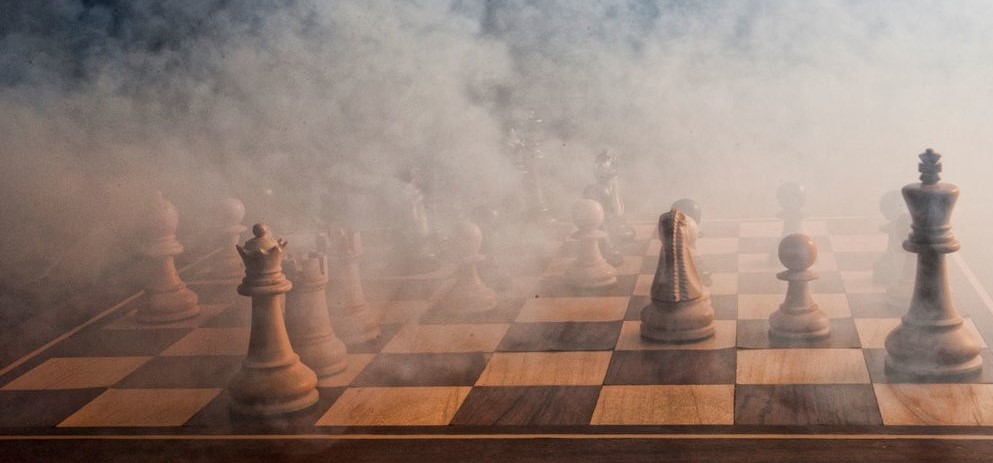



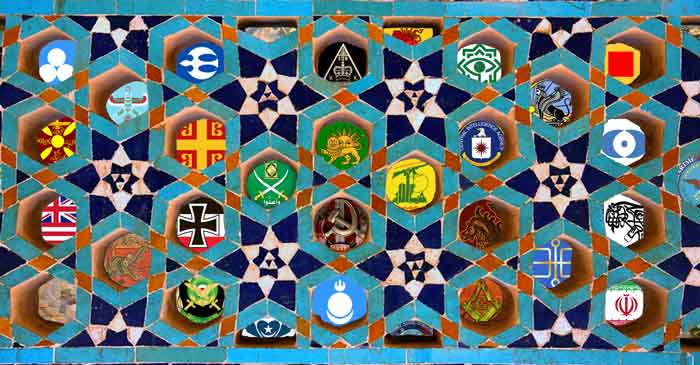
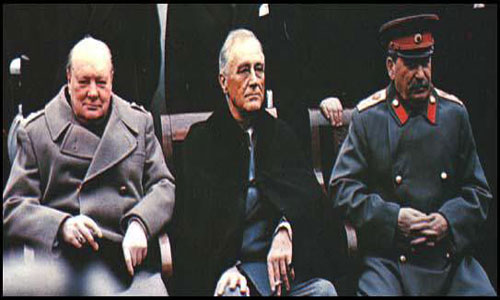

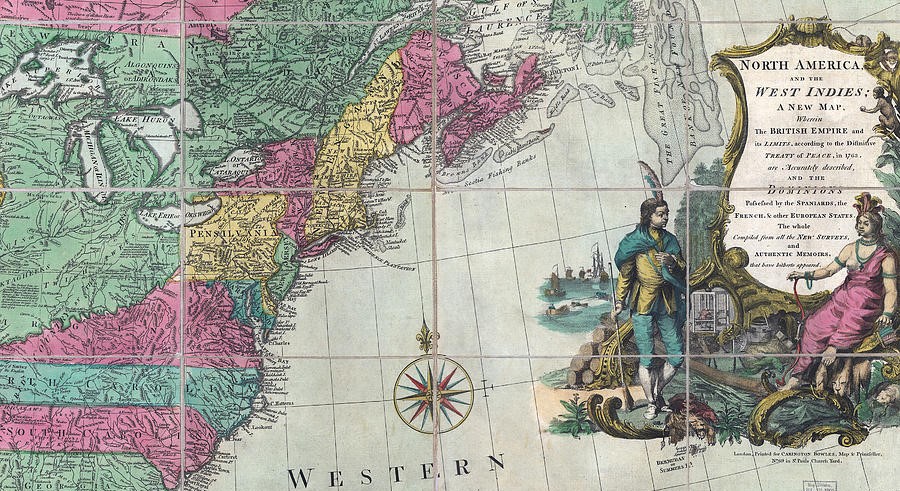
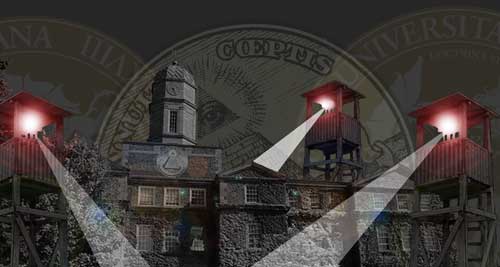
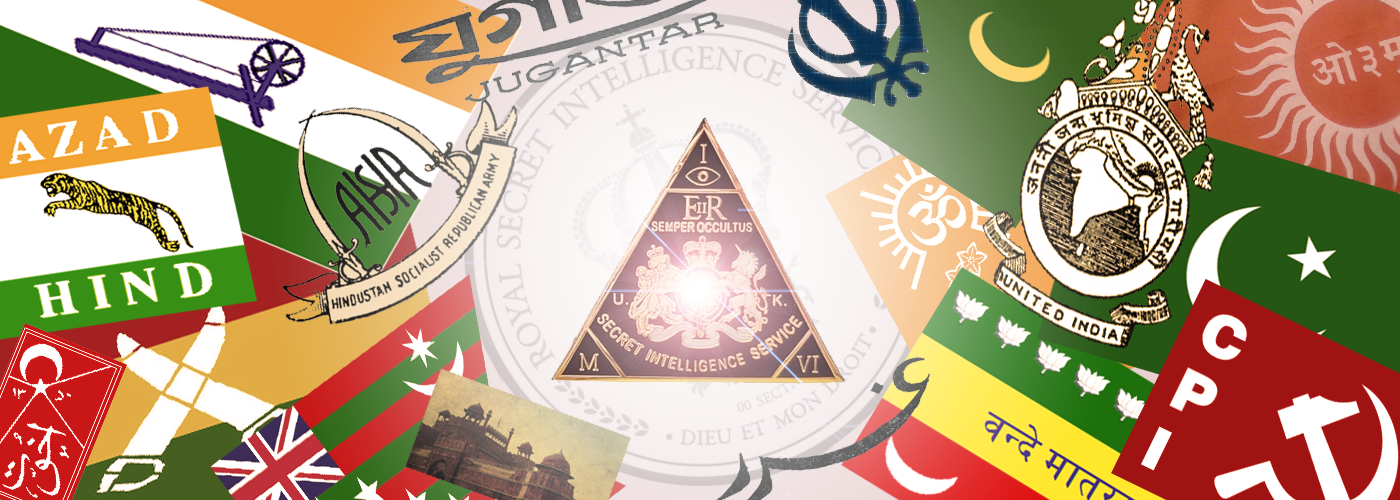


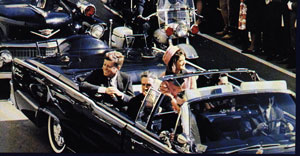

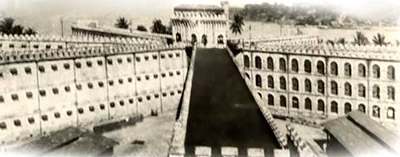


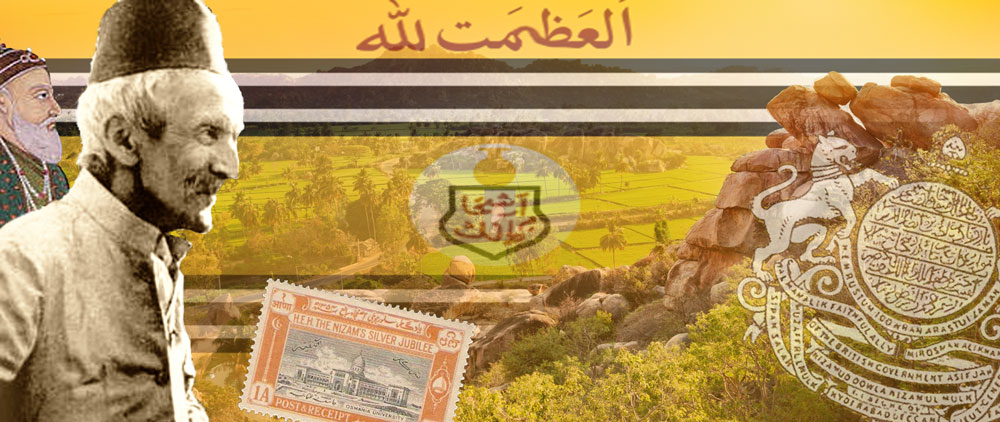






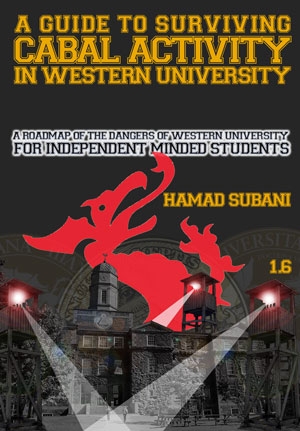

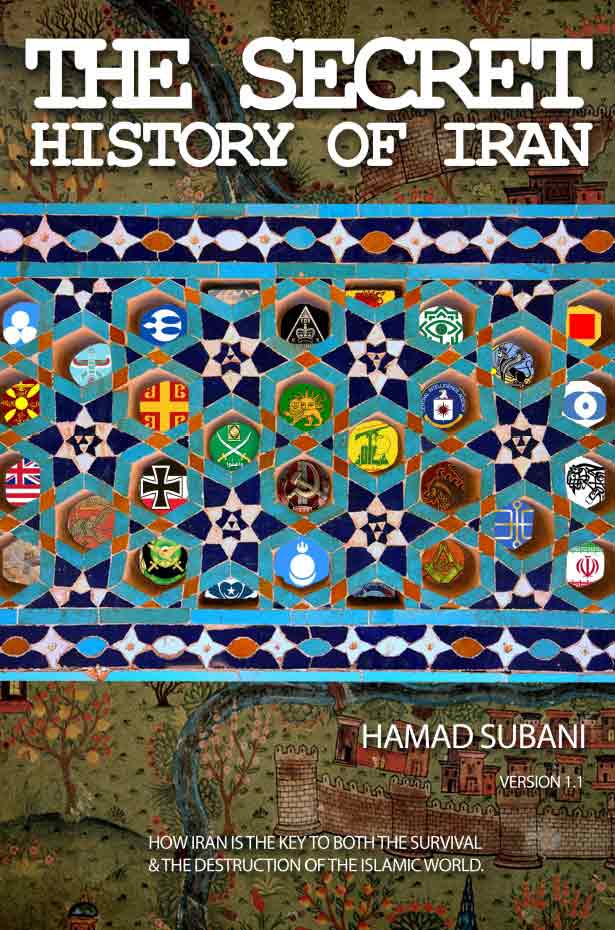
The First Freemason Lodge in India was not at the Gosha Mahal Baradari Hyderabad. It was a grand building built by teh Last Qutub Shahi ruler Tana Shah in 1682 and was donated to teh freemason by Nizam in 1872.
The first lodge was established for the British Military and other authorities in India in 1728 at Fort William Calcutta called Star of the East.
The doors of freemason were opened for Indians in 1775, when Nawab Umdatul Umra of Carnatic opened first lodge in Trichonopoly, in South India.
Please refer Freemasonry in India
https://linfordresearch.info/fordownload/World%20of%20Fmy/Nairn%20India.pdf
Shoukat Ali Khan Hyderabad India
Thanks for this.
The grave of Aurangzeb is in the premises of a Dargah in Khuldabad near aurangabad. there is no tomb over it nor even a structure.
Taj Mahal like structure is in aurangabad, whichis around ten miles away from his grave.
So what you have mentioned about his grave is not correct.
Thank you for the clarification. The Taj Mahal like structure is actually the tomb of his wife. I have corrected.
Gosh !!! what an intellectual article . Very first time I got to read something eloborative on Shah Waliulllah and the reason of his invitation to Abdali. You are incredibly remarkable in presenting the profoundness and minute details on the subject. Are you a historian or have you written any books.
Share your articles or suggest some books on historical India from Muslim rulers point of view. Had enough of Aurangazeb bashing and Muslim rule criticism nowadays around. So was wondering the justification from the other side.
Please do share.
You could take a look at my book The Secret History of Iran. Since the history of medieval Iran is linked to that of India, it does contain a lot of previously undisclosed information on the Mughals and other Indian dynasties as well.
Qasim Rizvi did not escape , he did his prison term and was relocated to Pakistan by the Indian government . I find lots of unsubstantiated facts in your write up.
This is not the official history of Hyderabad State, it is the Conspiracy History of Hyderabad State, where we try to fill in the blanks in the official narrative. Its not for everybody. Do you really think Qasim Rizvi would be let go so leniently?
Hi, certainly, history of Hyderabad is enticing. I have come across a novel “Theft of Nizam’s Gold” by a writer from Hyderabad, Naser Banaqeeb who presented the life of Nizam in a wonderful way. The novel is a gripping tale of bygone era of Nizam, love and mystery of the gold stolen – the history doesn’t have any record of it. Yes, the gold stolen from Nizam’s treasure has no mentioning in any books. But, the author described the same in an artistic manner. The novel is available online at amazon.
Dear Abraiz Ali Khan,
I am based in Mumbai and an avid reader of “authentic” historical books.
I would be much obliged if you could share with me any such books in your possession, including “Tragedy of Hyderabad”.
My contact details are: iyerpnpl@gmail.com
Warm regards,
Arvind Iyer
Hello Mr. Arvind. This is the book I have mentioned: https://www.goodreads.com/book/show/18360701-tragedy-of-hyderabad
I found it in a Sunday, second-hand book market. Currently, this book is with my brother who lives in Canada. Sorry for not being able to share it.
Dear Mr. Abraiz,
I have a nephew in Canada whom I will be meeting at a family function in October. If you can share with me the contact details of your brother in Canada, my nephew can coordinate with him and photocopy the book and hand it over to me when we meet.
Incidentally I am in Hyderabad on Monday June 25th. I would be very happy to meet with you.
Once again my email id is: iyerpnpl@gmail.com
Warm Regards,
Arvind Iyer
Pl visit Haziq and Mohi a book store near Charminar , they have copies . Picked up my copy of Tragedy of Hyderabad and other books on hyderabad from there . The store finds a mention in The Last Nizam by Jhon Zubrcki and is regularly frequented by history buffs , most notable being William Dalrymple , he has given a beautiful account in The White Mughals of William Kirkpatrick the British resident during the end of the 18th century and his affair with Khai un Nissa great niece of Aristu Jah the prime minister at Nizam Ali Khan’s court . He eventually ended up marrying her and converted to Islam . Most of his research work was carried out by literature provided by Haziq and Mohi .
Hello Mr Iyer , you can get the book and many other out of publication books on Hyderabad at Haziq and Mohi book store near Charminar . The store finds a mention in the Last Nizam by Jhon Zubrycki and is frequented by history buffs from India and abroad , most notable being William Darlymple whose book The White mughals revolves around the stories of William Kirkpatrick the british resident at the end of 18th century in Hyderbad and his affair with Khai un Nisa the great niece of Aristu Jah the prime minister of Nizam Ali Khan , which he later marries and converts to Islam .
You may also be interested in The Destruction of Hyderabad by Abdul Gafoor Abdul Majeed Noorani. No idea where to find it though.
Its overwhelming to read this..present day hyderabadis are so ignorant about their past. . I wish many of them could read this
Assalaamualaikum. I am a citizen of Hyderabad itself. Born and brought up here. I do have an interest in our history as well. You have written a very engaging piece of research. Do accept congratulations for it. As it happens, there are a few points that I do disagree with. One is your saying that venerating graves is an “Islamically abhorrent practice.” But maybe you subscribe to one of those sects that see graves as idols, so let it pass. I don’t need to tell you that scholars have compiled voluminous works on this subject. Read them if you will.
The other point that raises my hackles is the flippant description of Jamia Nizamia. As it happens, I am closely related to this institution. All my teachers of Islamic sciences have studied at this institution. Your description of it stems of ignorance or, if you will excuse me for saying so, your prejudice against those venerate graves. Jamia Nizamia was started in 1876 AD. Its founder, who was the teacher (Ataleeq as they called them then) of the 6th and 7th Nizams, passed away in 1917. If you would look into the history of Jamia Nizamia and its scholars, you would see many un-Islamic activities and trends being checked by them. Keep in mind that it was a nascent institution without any power of enforcement. Which means that Jamia Nizamia could only tell that something was wrong and must be stopped, but could not actually go out and stop them. Frankly, there are many firsts the credit of whom goes to Jamia Nizamia and more specifically its founder, Imam Anwarullah Farooqui (May Allah shower His Mercy on him). Hyderabad was the only state to have departments of Qazaath – where marriages, divorces, etc. were registered, the only state to outlaw reprehensible Hindu customs like Murli, etc., the only state to have standardized weights, possibly the only state or one of the very few which trained people with a standardized syllabus to administer basic Islamic laws to the populace. The State Central Library (earlier known as Asafjahi Library) was established at the behest of Shaykh Anwaarullah. No, they were nor politically active. As I said, it was a nascent institution, just started. Maybe in time, if Hyderabad state would have been there, they would have played a greater role.
The best part about your piece is that you give sources. I do have some of the books like Tragedy of Hyderabad with me. I will surely read up as much as I can the source books that you quote and see your point of view in much broader and richer detail.
Best of luck for your future research.
Assalaamualaikum.
Thank you for the additional info on Jamia Nizamia. While I do accept that Jamia Nizamia did in fact play a positive role, I believe that the fact that it was an official institution limited and hindered its ability to fulfill its role in a more wholesome manner. For example, they could not critic the sponsorship and inclusion of Shiite practices of later Nizams. And by and large, they did fail to enlighten the Muslim population, as evidenced by the level of ignorance and the incorporation of non-Islamic practices into Islam by the common people. If The Powers That Be were serious about Islam, they would have supported it more thoroughly, perhaps with a budget much bigger than the war aid they gave to Britain. As you mentioned, they started doing so, but it was too little, and too late.
In Islamic history, Muslim groups attain political power only when they start imposing and reinstating the natural order of things. Otherwise nature overcomes them. Towards the end, the Nizams began failing to maintain their holistic connection to the Mystery Saint.
Dude you are awesome. Where you been?
Do you have any recommendation for occult conspiracy sites with muslim perspective?
The main reason why it’s so hard to find this is the cultural lag muslim readers annnd writers have due to the ravages of colonialism westernization and the like. In the world that emerged after ww2 seems the only ticket for indians and muslims to prosper in the west was the sci/tech route. So as a fractured bordered nation, there was not much literal development.
For example most muslims i know go as far as saying 911 was ‘possibly’ a conspiracy and that Kanye or whoever is a free mason, and that’s as far as it goes. They will never include the saudis or big banks or the company they work for.
Anyway look forward to reading your next masterpiece.
The only “Islamic” Conspiracy website that I find worth a mention is that of David Livingstone> http://www.conspiracyschool.com/